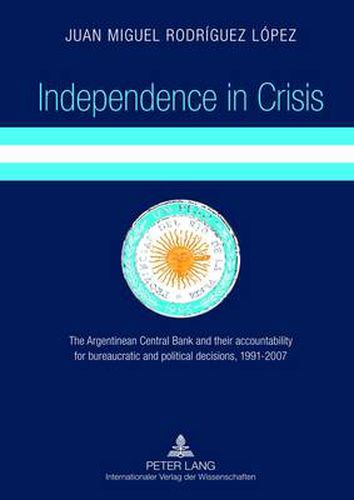Readings Newsletter
Become a Readings Member to make your shopping experience even easier.
Sign in or sign up for free!
You’re not far away from qualifying for FREE standard shipping within Australia
You’ve qualified for FREE standard shipping within Australia
The cart is loading…






This title is printed to order. This book may have been self-published. If so, we cannot guarantee the quality of the content. In the main most books will have gone through the editing process however some may not. We therefore suggest that you be aware of this before ordering this book. If in doubt check either the author or publisher’s details as we are unable to accept any returns unless they are faulty. Please contact us if you have any questions.
Central bankers like the idea of low inflation, but their actions have a distribution effect of richness. During the 1990s, the independence of central banks increased. What have central banks done with this independence? When we infer that all actors have interests, whether governments, voters or interest groups, why would we assume that central banks are technocratic institutions maximizing the welfare of the state? To answer these questions, this study looks at the Argentinean Central Bank between 1991 and 2007 and researches the incentives of a central bank to act strategically. This book uses a model which is an adaptation of Helmke’s model (2002, 2005) for the Supreme Court of Justice. An inter-temporal conflict of interest explains the Central Bank’s behavior.
$9.00 standard shipping within Australia
FREE standard shipping within Australia for orders over $100.00
Express & International shipping calculated at checkout
This title is printed to order. This book may have been self-published. If so, we cannot guarantee the quality of the content. In the main most books will have gone through the editing process however some may not. We therefore suggest that you be aware of this before ordering this book. If in doubt check either the author or publisher’s details as we are unable to accept any returns unless they are faulty. Please contact us if you have any questions.
Central bankers like the idea of low inflation, but their actions have a distribution effect of richness. During the 1990s, the independence of central banks increased. What have central banks done with this independence? When we infer that all actors have interests, whether governments, voters or interest groups, why would we assume that central banks are technocratic institutions maximizing the welfare of the state? To answer these questions, this study looks at the Argentinean Central Bank between 1991 and 2007 and researches the incentives of a central bank to act strategically. This book uses a model which is an adaptation of Helmke’s model (2002, 2005) for the Supreme Court of Justice. An inter-temporal conflict of interest explains the Central Bank’s behavior.